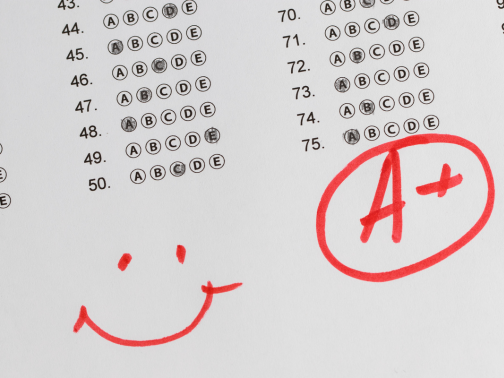Contents
Toggle
Meet David De’ Ath, founder, editor, and writer at Wonderful World English. With his extensive background as an English teacher, David provides valuable insights and practical tips on ESL for students and teachers alike.
There is a growing demand for English as a Second Language (ESL) teachers worldwide.
This is because English is primarily considered the number one global language.
People from many different backgrounds spend their time, energy, and resources on learning to communicate English effectively.
This comes from the understanding that English proficiency can open doors to opportunities in the worlds of business, academia, and so much more!
And with this, of course, comes a growing demand for ESL teachers.
However, the difference between an okay teacher and a good one is distinct.
Nobody starts out at the top of their game, it takes time to refine and enhance our skillsets in any profession.
A good ESL teacher has more than just a grasp of English. They are someone who can adequately prepare and structure their classes to meet the needs of their students, as well as being able to incorporate different strategies that cater to their student’s learning styles and abilities.
By tailoring their approach, a good ESL teacher can give their class the best chance of learning English.
Whether you’re already an ESL teacher looking to improve your trade or considering starting a new career teaching ESL, we’ve got you covered.
I am an experienced ESL teacher who has been teaching for several years, I know what it takes to be a good English teacher and I aim to provide you with some insights on this topic today.
We will go into more detail about what it takes to be a good ESL teacher and help you better understand what ESL learners need.
Without further adieu, let’s jump in.

How to Be a Good ESL Teacher
Ultimately, a good ESL teacher will be able to conduct engaging lessons for their students where their students are able to understand and retain the content effectively.
Of course, there are many different kinds of ESL students, and teachers will have to cater their approach according to this.
Students of ESL often come from diverse backgrounds and have different proficiency levels and ages.
As an ESL teacher, your primary role is to help these students develop their English language skills to communicate effectively and achieve their personal and professional goals.
Before we delve into the qualities of a good ESL teacher, it’s essential to understand who ESL students are and the challenges they face:
1. Understanding ESL Students
Understanding students is the first step in being the best ESL teacher you can be.
ESL students are individuals who come from non-English speaking countries or communities.
They may be school kids, immigrants, refugees, or international students studying in English-speaking countries.
In 2022, there were around 1.5 billion people worldwide who spoke English either natively or as a second language
Statista.com
This number continues to grow.
These students range from young learners to adults who want to be able to speak English and study in their spare time.
It’s imperitive for an ESL teacher to fully know their students needs and goals and to adapt their style accordingly.
Young learners will require a higher-energy, more visually stimulating class.
Adult learners may want to learn a specific form of English such as business English, and so lessons will be orientated around business-related content.

– Challenges Faced by ESL Students
As with any language learner, ESL students face numerous challenges when learning English.
They may struggle with all sorts of English elements, including pronunciation, grammar, vocabulary, and idiomatic expressions.
They may also face cultural and social barriers that affect their ability to learn and communicate effectively in English.
In my experience teaching young learners, it is common to notice a student switching off or becoming disinterested.
Remember, they may not even wish to learn English; it may be part of their school’s curriculum or the will of their parents.
All ESL students are different and, as such, come with their strengths and weaknesses.
Whether in the form of motivation, comprehension, or something else, any language learner will have challenges along the way, and a good ESL teacher recognizes this.
It is crucial to build fun and engaging lesson plans that keep students motivated to learn and inclined to get involved.
For some useful tips on how to lesson plan, check out the guide below!
Related Article: How to Lesson Plan for New Teachers – Free Guide

2. Characteristics of a Good ESL Teacher
In my experience, to be an effective ESL teacher, you must possess certain qualities that enable you to connect with your students and help them better understand what you teach.
There are several characteristics of a good ESL teacher, and here are four of the most essential ones that all of them should possess.
Of course, everyone is different and will have their own teaching style.
The characteristics below are the most valuable in helping anyone be the best ESL teacher that they can be:
– Patience
Patience is critical for any teacher.
It can frustrate teachers if their students don’t pick up what they are taught.
Learning a new language is a challenging and often frustrating experience, and some students will take longer to grasp certain concepts and skills than others.
As a good ESL teacher, you must be patient with your students regardless of their pace and provide support and encouragement as they develop and grow in confidence.
All good teachers understand patience is vital in helping their students progress.
It can be easier said than done at times, any teacher knows that the job can be stressful.
Make sure to take time out to recharge your batteries and keep your energy levels high to get the best results in the classroom.
– Adaptability
This one is another essential quality of a good ESL teacher.
Students come from many different backgrounds and have different learning styles and requirements.
As a teacher, you need to be flexible and adaptable in your teaching methods to accommodate the unique needs of each student and classroom.
Teaching adults is very different from teaching children, and a career in ESL may very well include a change from one to the other somewhere down the line.
Also, it isn’t uncommon that in some schools, such as many public schools in China, an ESL teacher could teach around 50 students per class!
And I know this because I am one of these teachers.
Many of my classes have between 40 and 50 children, and my job is to ensure they maintain good behavior and engage with the lesson’s content.
On the other end of the spectrum, I can also teach online classes that may have only a handful of students involved in a single session.
And I’ve even done private tutoring, where I teach one-on-one classes.
So, a certain level of flexibility is required here, where it won’t be the same old monotonous routine in every job role an ESL teacher fulfills.
A good ESL teacher must adapt and adjust themselves to suit their surrounding environment and students’ requirements.

– Good Communication Skills
Effective communication is a fundamental requirement for any good teacher.
As an English language teacher, you must be able to communicate clearly and effectively.
You also need to be able to adjust your communication style to suit the needs and proficiency levels of your students.
Sometimes, a teacher doesn’t understand why something is precisely the way this is, and that’s fine.
But, a good ESL teacher can communicate with their students verbally and through good body language.
Eye contact, tone and pace of voice, and effective Total Physical Response (TPR) are all essential components of a good teacher’s toolkit.
Speaking your students’ language can also be beneficial, although this is not required.
Find out more about this in the article below!
Related Article: Do You Need to Be Bilingual to Teach ESL? – Teacher’s Answer
– Empathy and Understanding
Empathy and understanding are both crucial qualities for any good teacher.
As an ESL teacher, you must understand your students’ challenges and struggles and empathize with their experiences.
This will help you build trust and rapport with your students and create a positive learning environment.
Learning English can be a challenging experience for anyone who isn’t a native speaker, and an effective teacher understands this.
This ties in well with number one; being empathetic and understanding your students’ struggles is essential in keeping yourself calm and patient.
Nobody wants a hot-headed teacher that gets angry if they get the answer wrong or don’t understand something.
It’s always a good idea for any good ESL teacher to try to see the bigger picture and remember these key points.
Teachers should strive to build a positive classroom culture to give their students the best chance of development.
Check out the guide below for some useful tips on how to create a positive classroom culture!
Related Article: How to Build a Positive Classroom Culture – Teacher’s Tips

3. Strategies for Good ESL Teachers
In addition to possessing the essential qualities of a good ESL teacher, you must employ effective teaching strategies to help your students learn English.
Being able to properly strategize will help both teachers and learners get the most from the lesson.
Here are six great strategies that good ESL teachers implement for effective ESL teaching:
– Set Clear Goals
Setting clear goals and expectations is essential for effective ESL teaching.
You need to communicate your learning objectives and expectations clearly to your students and provide them with regular feedback on their progress.
Also, establishing class rules and being consistent in a rewarding system that promotes positive reinforcement is a very effective technique used by good ESL teachers.
Make sure that your students are fully aware of what is expected of them and track their progress on their language learning journey.
– Create a Positive Classroom Culture
Creating a positive classroom culture is crucial.
You must create a safe and supportive space where students feel comfortable practicing their English language skills without fear of judgment or ridicule.
Learning a new language can be daunting, and some students lack confidence in pronouncing new words well.
By promoting a positive learning environment and a warm atmosphere in your classroom, you can help even the most introverted students come out of their shells and practice their English in a calm and safe environment.
All good ESL teachers understand this and will ensure they provide a positive learning environment for their students.
Teachers should strive to build a positive classroom culture to give their students the best chance of development.
Check out the guide below for some useful tips on how to create a positive classroom culture!
Related Article: How to Build a Positive Classroom Culture – Teacher’s Tips

– Encourage Active Participation
Encouraging active participation is also crucial to effective teaching.
It would help if you encouraged students to participate actively in class by asking questions, sharing their thoughts, and engaging in group activities.
This helps students develop their language skills and build confidence in their English communication skills.
There will always be shy students who try to avoid getting involved.
And thus, it is the job of a good ESL teacher to get these students involved without applying too much pressure on them or embarrassing them.
– Make the Most of Movies and Songs
Visual aids such as pictures, videos, songs, and diagrams can be helpful in language learning.
They can help illustrate complex concepts and make learning more engaging and memorable for students.
There are so many great resources online that teachers can purchase or use for free.
I often find relevant YouTube videos to play for my students and make my images using Canva.
Any good ESL teacher will attest to the value of using good visual aids in their classrooms to help their students better understand the content.

– Use Materials
Using materials such as props, toys, flashcards, and crafts, etc. can all be incredibly useful in inticing students to use English.
This can help students develop their language skills and cultural awareness, instilling a higher interest and determination to succeed.
Most schools should have materials at-hand, else you can prepare these yourself, there are many great tutorials available online for you to make the most of.
– Provide Regular Feedback
Providing regular feedback is essential for effective teaching.
You need to provide students with feedback on their progress, strengths, and areas for improvement.
This helps students stay motivated and focused on their learning goals.
Some students may excel in writing but struggle with speaking; others will be the opposite.
Letting them know their strengths and weaknesses helps ensure everyone is on the same page, and a good ESL teacher will know where to focus their efforts on their students, and the students will learn where to focus theirs.
This will help students stay on track with their development and also allow you to cater your future classes accordingly.

Conclusion
A good ESL teacher requires certain traits and abilities to teach the English language effectively.
They require patience, flexibility, and good communication skills.
A good ESL teacher will employ effective teaching strategies such as setting clear goals, creating a positive learning environment, and encouraging students to get involved.
I’ve seen some excellent ESL teachers over the years, and they each had one thing in common…
They cared.
By continuously honing their skills and striving to be the best they can be, good ESL teachers help their students unlock their full potential.
Make sure to join online communities and network with other teachers to help you develop.
We hope this has helped you understand what it takes to be a good ESL teacher.
Have a wonderful day!
Image Attribution: All images licensed via canva.com





